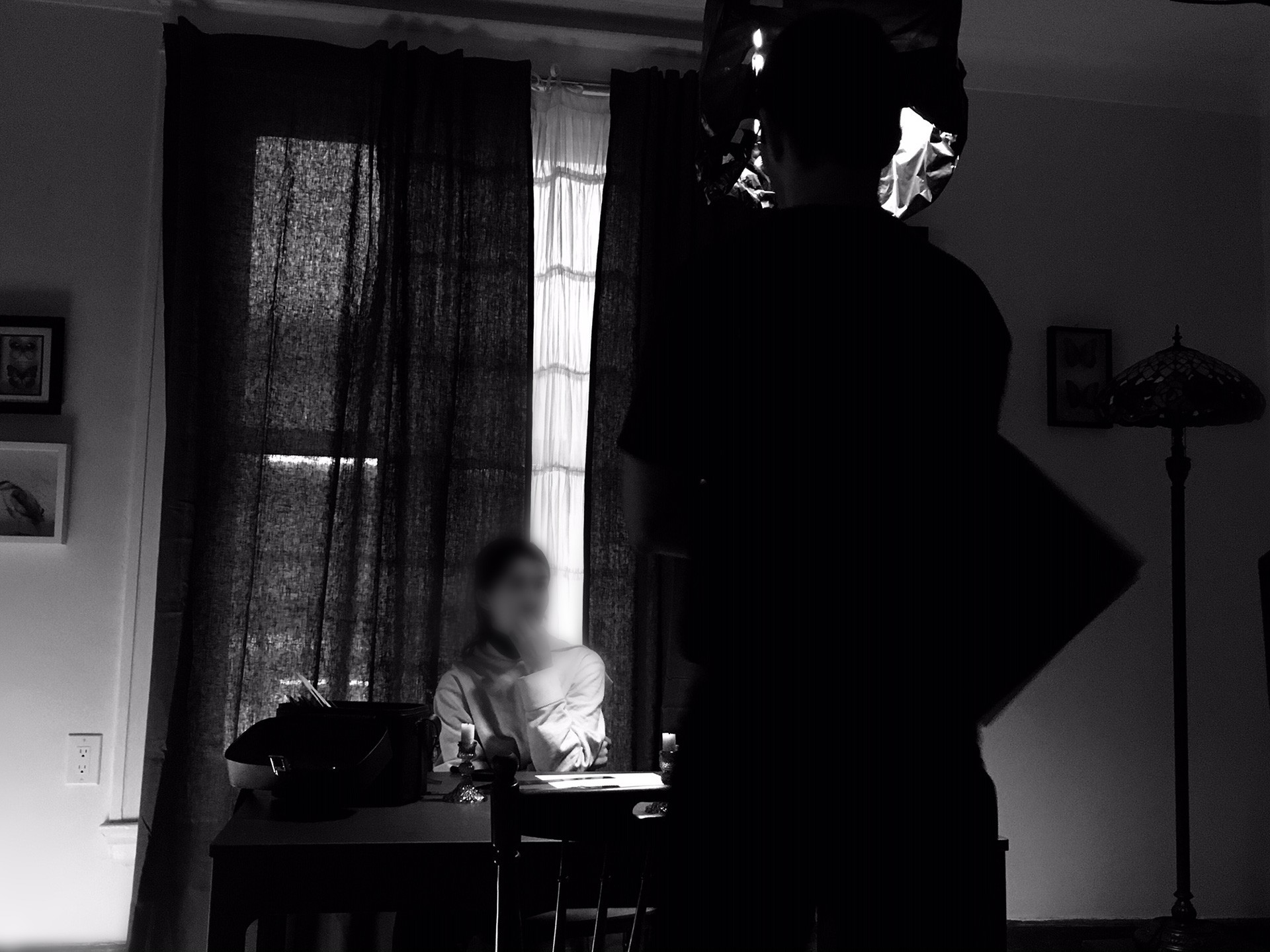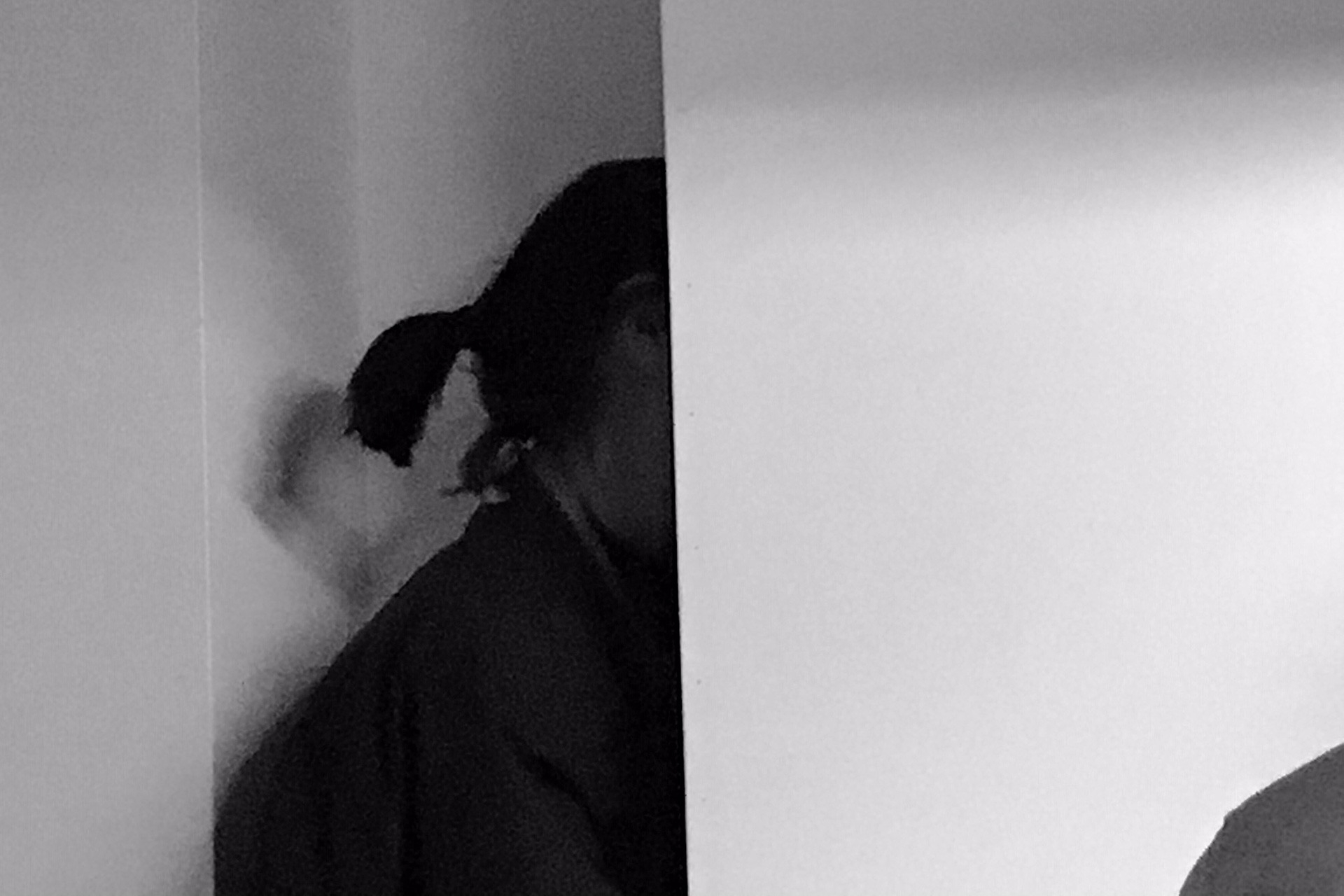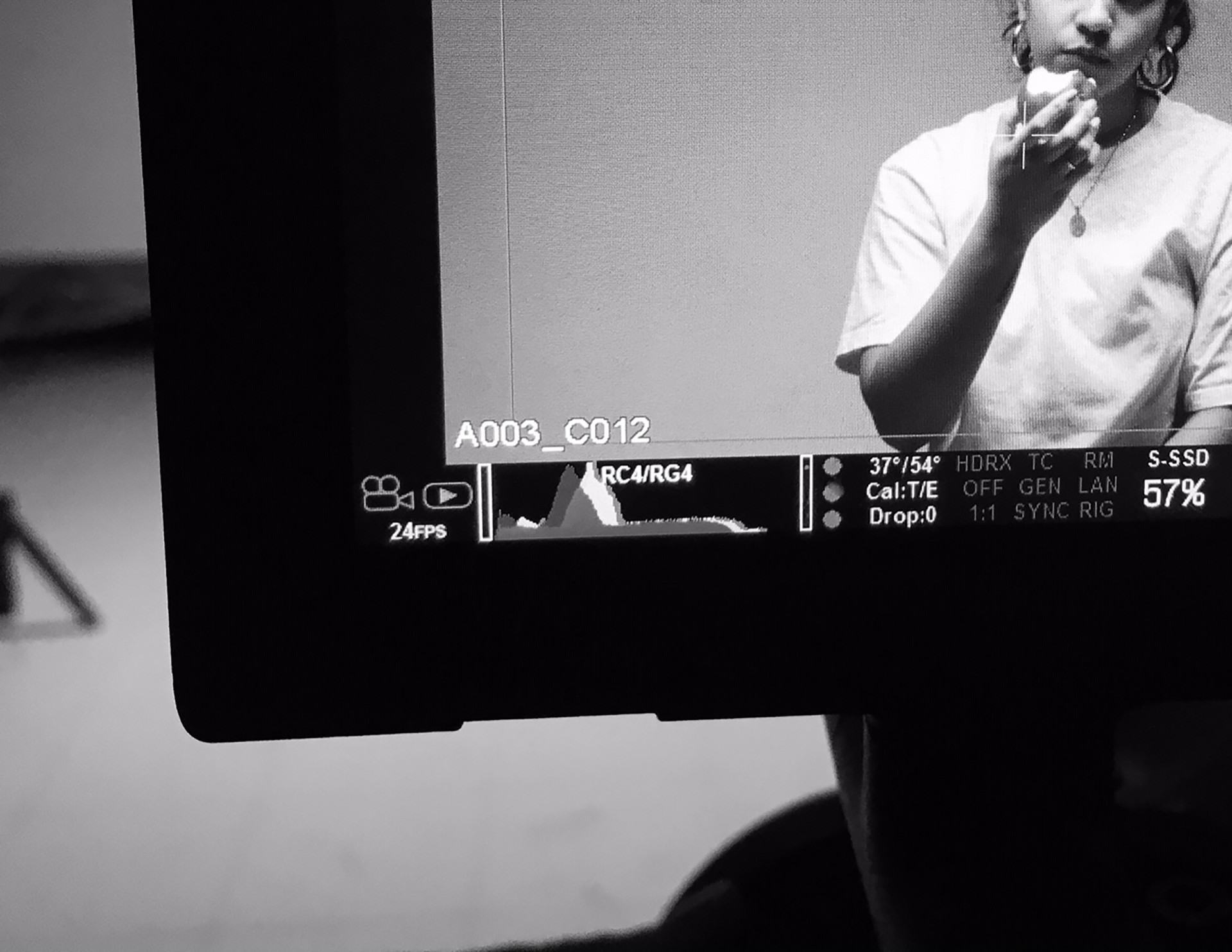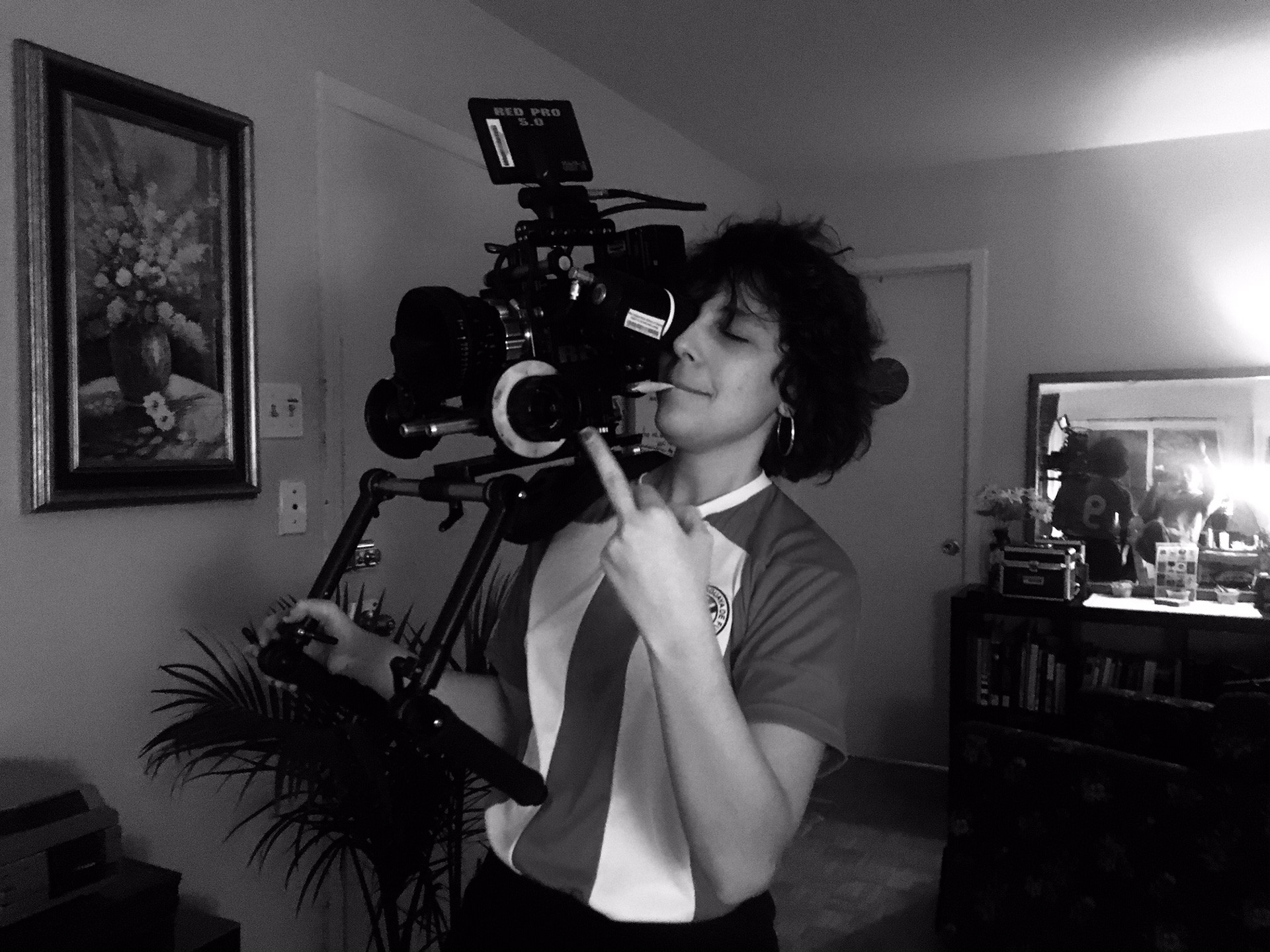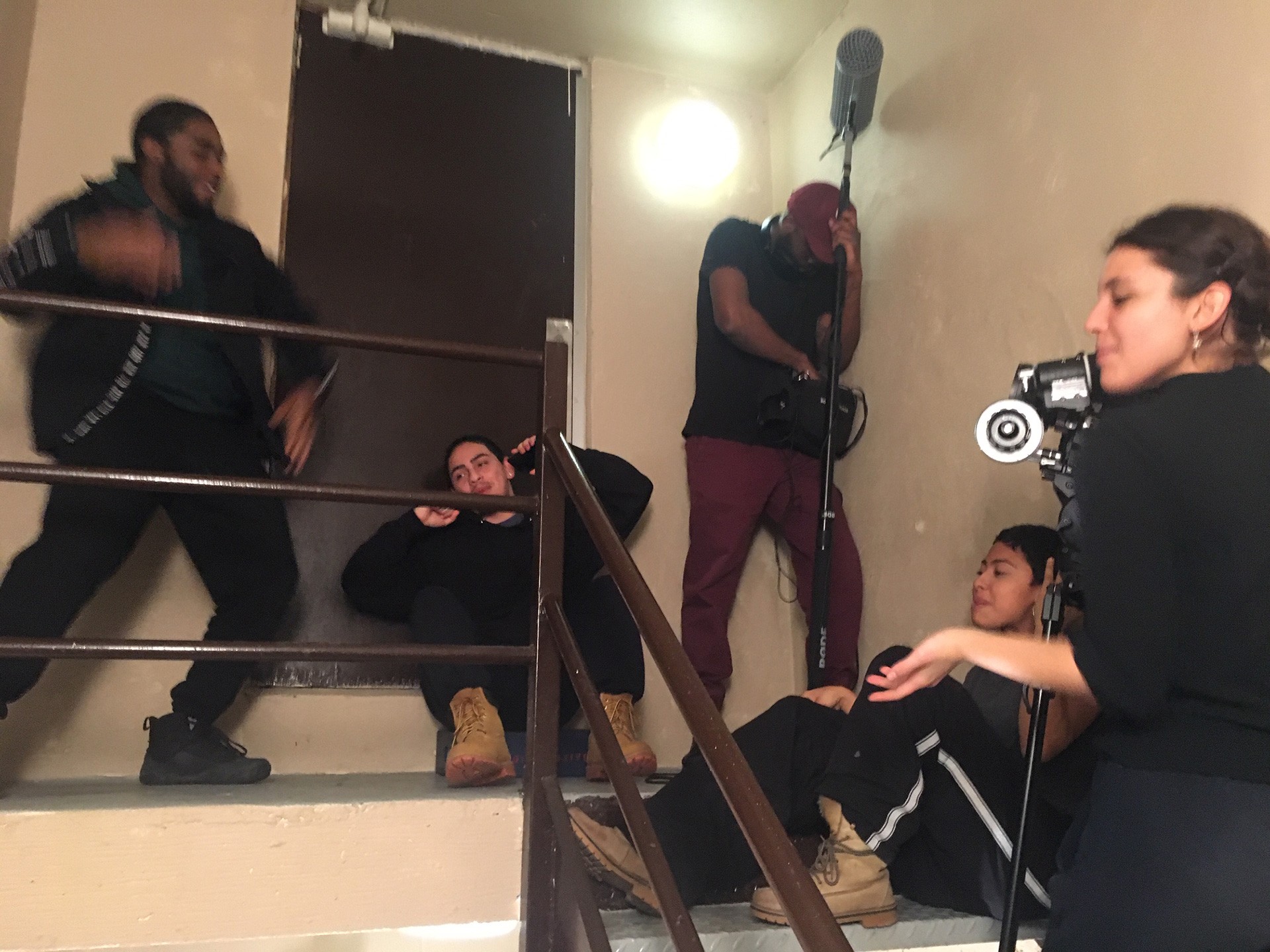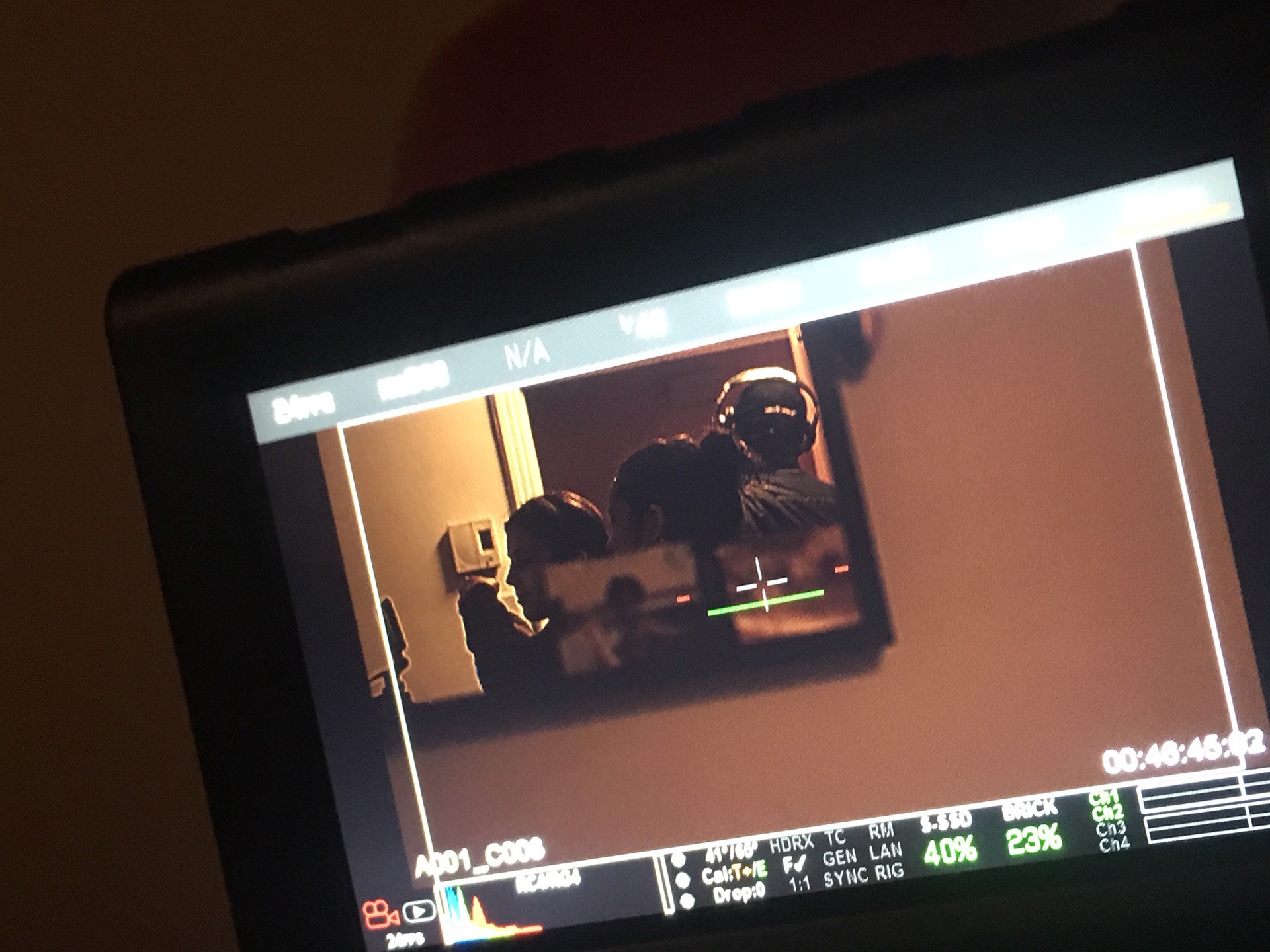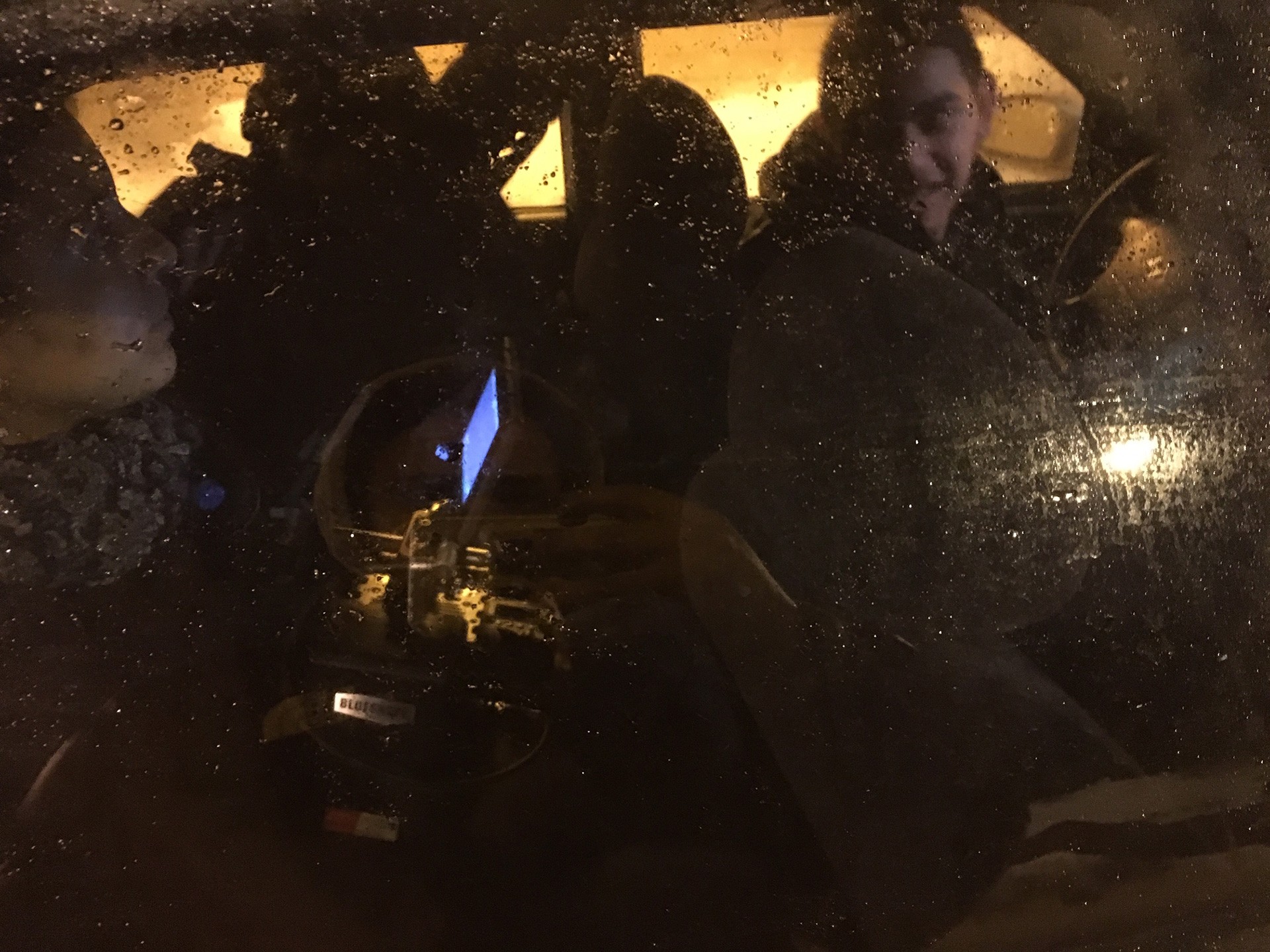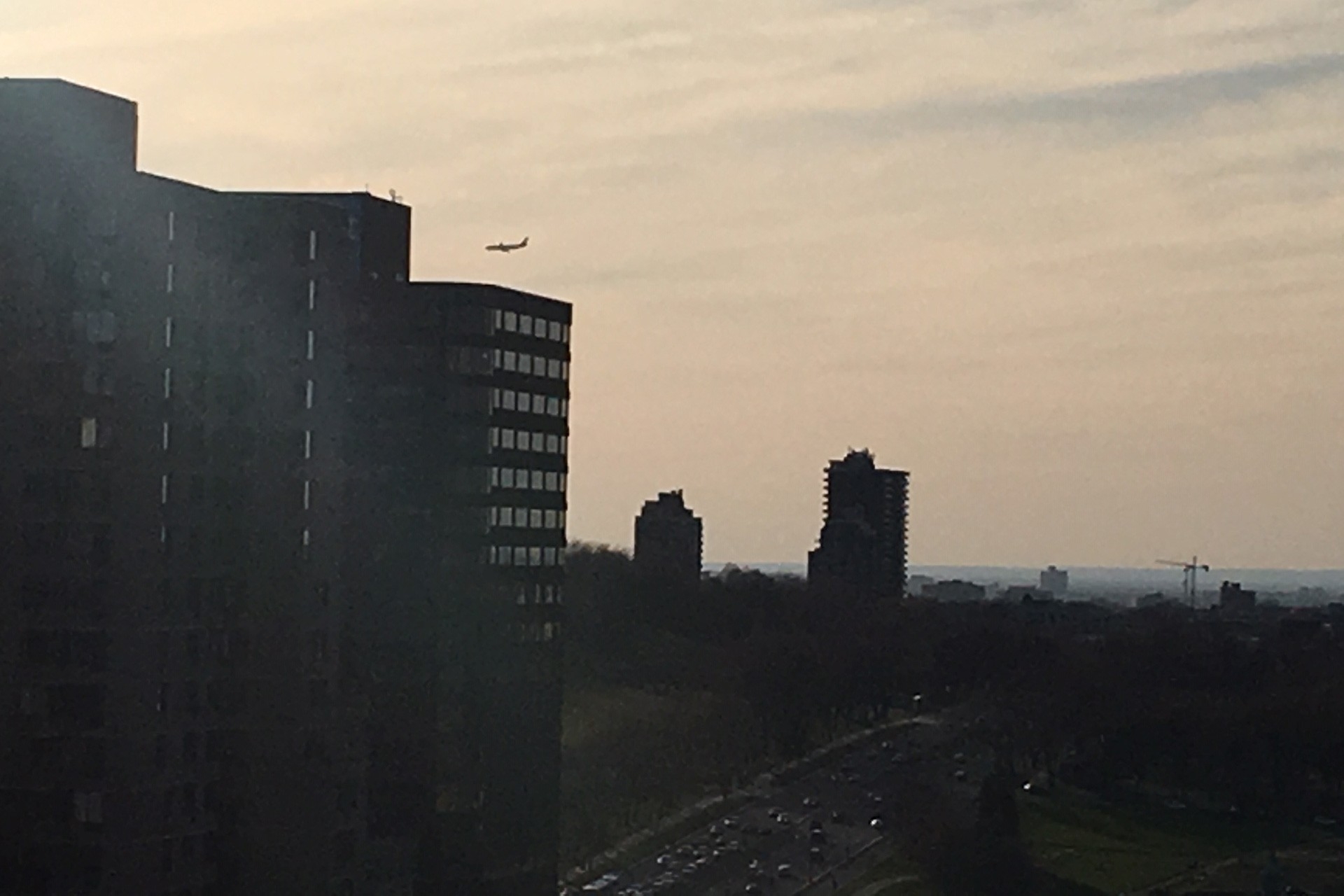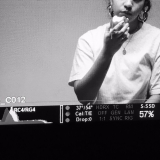
Had to sit
I was DOP and was supposed to be in charge. I was the only woman of color in a position of power on the set. But I was really an outsider. No one really cared what I had to say in the first place. I was sitting in a corner on the floor. Everyone was walking over me. They were just setting up the lights according to how they wanted to. In this picture, my sneaker presents my identity and my culture. Other people on this set dressed differently and acted differently. I did not feel I belonged to this environment and could not connect to the story that they were creating. My anxiety built up. At one point, I could not deal with it anymore and had to leave.
From the corner of the set
This picture shows the men around me. They were looking at the set. I was sitting in my corner and feeling bad. Nobody had time to deal with someone else’s [emotional] troubles. I felt I couldn’t say anything to anyone. I felt no one there could understand what I was going through because they were different from me and also focused on the film. On that day, there was actually one other person of color [on the set]. He got the vibe that I was not really there. I tried to explain to him how I felt. “Can you understand? All these white people here. Don’t you feel you do not belong?” He said no. He told me that I have to find a way to fit in. Or, I will never get work in this industry. I felt so attacked. It broke me because I saw another person like me - a person of color, an immigrant - conforming to this way of making cinema. Is this the only way that I can tell a story? Do I have to compromise, to be whitewashed, to lie to myself? The only other person to whom I probably could relate did not even understand and get it. That’s why I felt I was really alone here. I think I can’t [stay on this set]. So, I left the set.
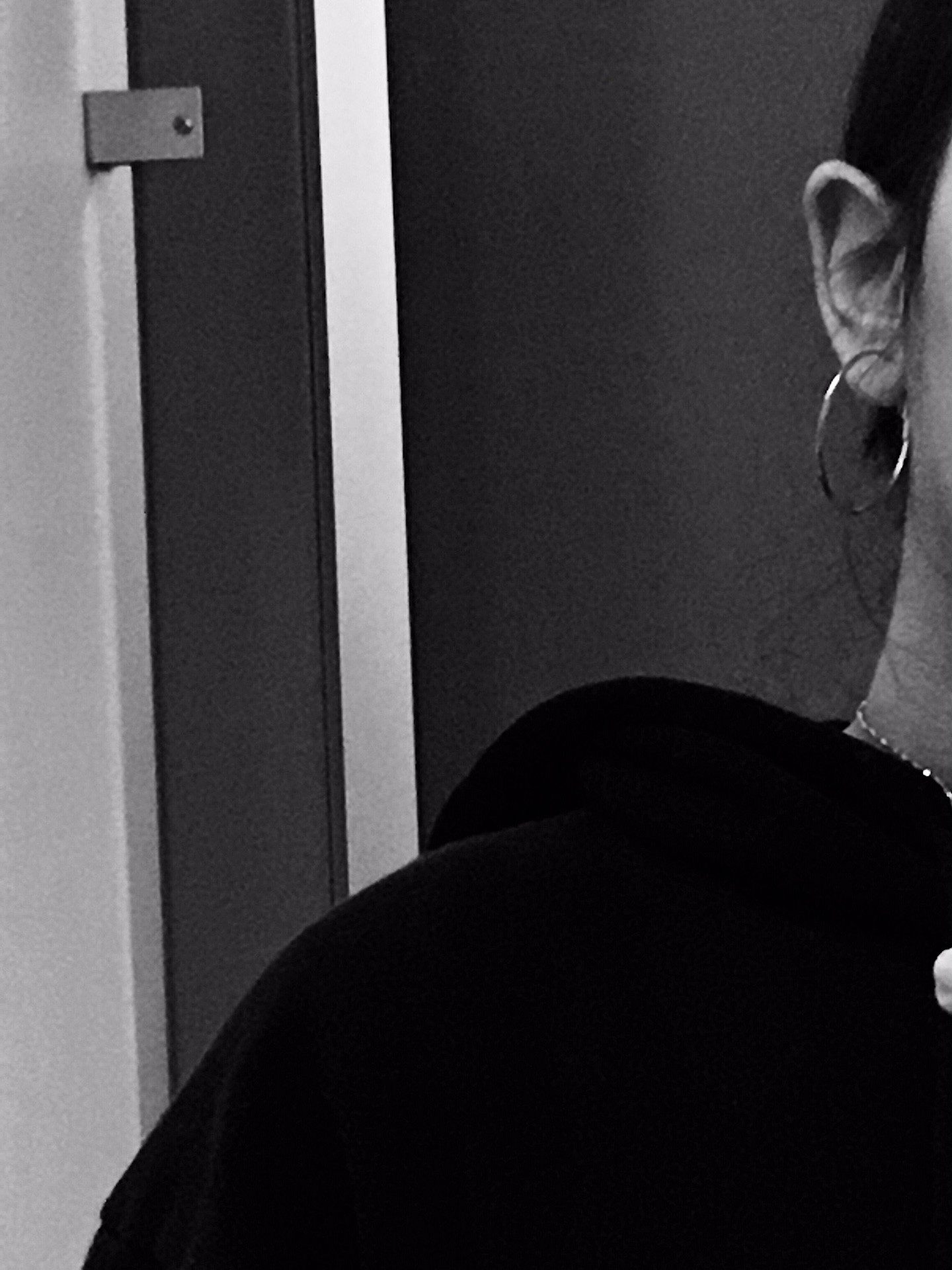
Self-portrait in the bathroom
There were so many politics going into this work [filmmaking]. On this set, as a DOP, I was asked to do things that I did not want to do. I felt I was mistreated and did not belong to this environment. This is me in the washroom. I was all by myself there crying. There were a lot of internal battles that we had to go through to learn how to present ourselves in these positions. This was a very informative experience in my life. I don’t regret being there. I don’t look back at these moments just with bad feelings because I did grow from it. After all of these experiences, I got to know where I stand, and who I am. I will never be like them and use this kind of machine-[like] way of making cinema. I am an outsider. At least I know where I stand.
Only homie on the wall
On this film set, I saw this wall mostly filled with the pictures of white people. There was only one image of a person of color. These little things say a lot about my experience and my encounter with such space. We are so used to seeing white bodies everywhere. I am sure no one else on this set ever noticed this one detail. But this picture shows there is really not much representation of people like me [in this environment]. I felt isolated, as I was the only one [different from the others]. This feeling can overpower you. Then you forget about it and it becomes insignificant.
X. and her AD
This is X. and her 1st AD. They were going through the plan for the next shot. In this image, you would not guess that she was the director. On this set, she was the only other female. They (the men) respected her. But there were times I felt that they were doubting her. I mostly had to communicate with other men on the set. I wished X. and I could work more closely together. But there was a barrier because of all these men around us. She did not know my experience at that time. She was so busy. That’s probably the reason why I never told her [about my difficulty] during the filming. I did not want to overburden her.
Me and everyone else
I was outside all day on the set. I felt really tired and just wanted to go home. But at night, I still had to work with the lighting team to set things up for the next day’s shoot. This picture shows me right there with all the men. The people on the lighting crew are technically-driven people. As DOP, I told the team to do this and that. The next day, I saw everything was changed. They were never aggressive, but there was a lack of understanding and compassion. They made me doubt myself. The reflection of the city added another sense of alienation to this memory. I have been in Montreal for 9 years but do not really speak French. Immigrants here speak French. So, there is also a barrier between me and other people like myself. I thought I do not belong here. I felt very lonely when I took this picture.
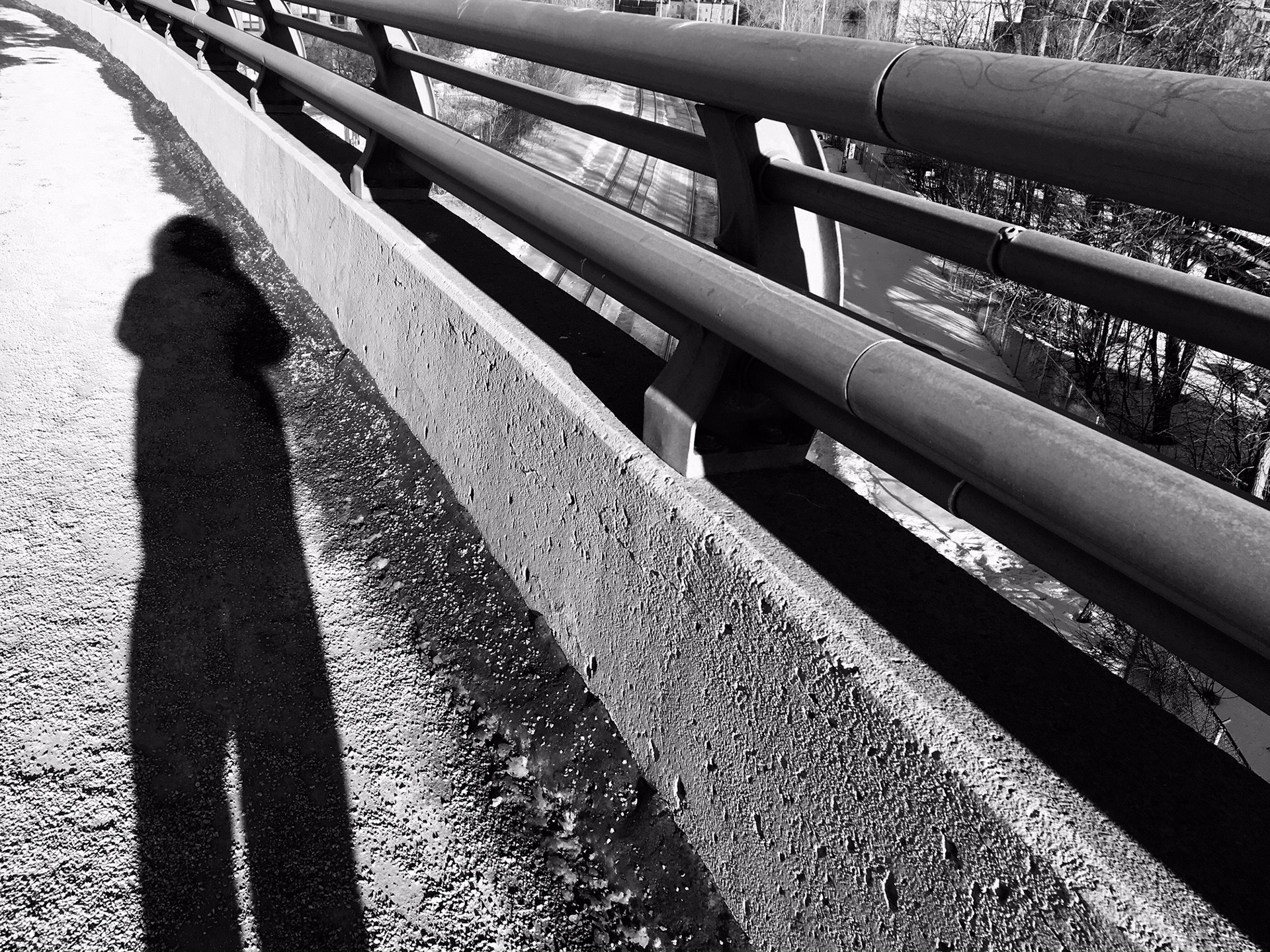
We don’t need you
I tried to go back to the set and to reclaim my DOP position. I wanted to prove myself that I can finish this job and go back to keep on fighting. When I got there, I felt I did not exist. My name was taken off the clapboard already. People were acting like they were seeing a Bigfoot. I was not wanted there. So, I left again. This time, I felt good because I left on my own terms. I was crossing this bridge to take the Metro and was going to see a close friend, who is not in cinema but is an immigrant and would understand my story. This picture of my shadow helps me to remember how exactly I felt, as I was on this bridge, looking over these train tracks and thinking about my future. I was happy that I have somewhere to go and am free to tell my story. It was an empowering moment.
A motif
After a troubled experience as a DOP, I really wanted to prove myself with my film. When I was at my friend’s neighbourhood, I saw this airplane. It was inspiring because the airplane is associated with ideas of movement, going somewhere, and my identity. This was like a preview of what my film would be. This film is not just for myself but also for people like me, the immigrants of Montreal.
Quitate de mi Escalera
The staircase at school is my hiding space and also a place where I can collect myself and be alone, think. I wanted to speak about my [alienating] experience [as DOP] in class. After I got to class, however, I felt I could not because I just felt alone in this situation again. We were also watching a cut from a classmate’s movie. His images made me feel very upset because his female character was in the background all the time. She did not have any identity or any purpose in the whole film. This image was kind of perpetuating that feeling of being out of focus, in the background. That’s how I felt, like I could not speak. I said to myself: you never have a voice anyways. You are not taken seriously. Here is this white man making movies about people of color. Yet the woman is still silenced. Why would my opinion matter to these people?
D. on art direction
This was D., the art director on set. This was the first day of shooting at night when everyone was very tired. The first day was very disorganized. Many things were falling apart. D. was a strong female presence on the set. This film had a lot of art direction. She had lots of pressure and was very tired. But she was calm, cohesive, and got her work done. I was inspired by her. I took this picture of her working behind this board because you can’t see her face. This kind of woman and this kind of work are impressive, but they do not have much visibility.
In-between shots
This was one of my favorite sets because I was working with my friends. Even though I was very tired and had a headache, these were the moments we could relax, talk, chill with friends, and play with the camera. It was a fun and good memory.
R. as AD
On this set, we were filming in a community center. Because the production manager did not do his work at all, everything was disorganized and the manager [from the community center] got very angry. R. was 1st AD and tried to communicate with him, but he dismissed her. He asked us to leave, and so we had to pick up everything and move. But we had not done the filming. Everyone was asking what were we gonna to do. The director was on the corner, very upset and lost. We were all gathered around this pick-up truck with our equipment. R. took the leadership, standing in front of everyone, lit her cigarette, and started telling people what we would do next. She calmed everyone down and acted like an authority. I remember she was doubting whether she could be a 1st AD just a few days before. At that moment, I was proud of her.
F**k Image 1
R. and I took Image 1 class. But we still did not know anything about RED camera after we had almost finished the semester. There were 16 students in this class and two cameras. Obviously, you rarely had the chance to touch the camera because there were always these two people [men] building the camera every time. When the film crew stored the equipment in our apartment, we wanted to take advantage of it and thought, “let us build this [camera], let’s teach ourselves how to do this.” So we built the whole thing and put it on the rig as well. We tested it to see how it would work for my film because R. was my DOP. She was holding up her middle finger: “F**k Image 1. I can learn this by myself.” She was also wearing her jersey from Paraguay. It represents where she comes from, a place where people do not usually have access to this kind of equipment. Holding the camera on her shoulder, she was making a powerful statement.
Singing cardi between takes
This was one of the last scenes we had to shoot. We had a small crew because the set was in a residential building. So, C. was recording the sound. R. was DOP and also operating the camera. I was directing. We did not have lunch, so we were tired and hungry. It could have been a situation where we were done, where the energy was done. But one actor started singing. Then all of them started singing and did a whole concert. R. started dancing. C. was kind of into it as well. I took this picture because this was a moment of hope and relief. [Singing] songs brought the energy up to a nice level and encouraged us to finish the filming. I loved this chemistry on the set. I was proud of my actors. As a director, I had a lot of pressure. My mind was scattered everywhere. But my priority on the set was always the actors. I thought if they were feeling bad, then [the film] was over. Seeing them in a good mood is really encouraging to me. Then, I could focus on other things and get the work done.
Last minute dancers
This was on my set. We had already planned the shot but had not yet decided who was gonna make moving body shadows. S., my friend M. and some other people on the set improvised the dance to make the dancing shadows. It was a spontaneous decision. They had fun and enjoyed the experience. It made me feel good that people were feeling good on my set. I wanted to create that kind of energy, that kind of space because I do not like to make people work like machines.
OG crabs
This was my set. We were working on the last scene, at night on the second day. People were tired. But I was still in a good mood because I was surrounded by people whom I care about and feel comfortable with. I felt at home, happy and proud. I took this picture of us on the monitor to remember the feelings of closeness and gratitude at this moment. For my film, I tried hard to choose people who can understand and care about the story that I want to tell. This decision helps me feel more comfortable in my position. It also makes this experience meaningful to me.
Making the final scene
The last scene was shot in the car. Before filming, I still did not know where we wanted to shoot it, and what kind of lighting was needed. I could feel that people were getting stressed. I decided to take the camera by myself. So, I was operating the camera with three actors in a moving car. It took an hour to finish shooting. When I came back, there was still an important dialogue scene left. It was already 11pm. R. and I got in the car with the actors. We found a parking lot with very strong lights. R. operated the camera. I directed the actors. It could have been a very stressful situation but we made it work. It was very fun. We were all laughing and looking at the images between the takes. Everything was happening organically. The process was really intimate as well because there was nobody there to put more pressure on us. I could just do what we wanted. I took the last shot and screamed: “Let’s wrap.” It felt really great. We finished the filming around 12:30pm. R. and I had a similar vision of cinema. We always looked back at this experience and thought “Wow, we really took this. This is our way.” I was proud of the process. All of these [things] were spontaneous. That’s most important for me in the end as a director.
Morningside in early spring
The post-production process was a different experience. You rebuild your story as you go. After a while, I was really lost and could not stay motivated to finish the film. Because I had been focusing on the film for a long time, I felt suffocated and unable to breathe. My film was initially inspired by some friends I made in New York. This place has a lot of significance for me personally, in terms of identity and creating this film. So I went back [to NYC] to see my friends again and visited this park, called Morningside. I went with R. During this trip, we did not think about the film. We did not want to worry about anything. To me, these flowers are symbols of rebirth. The trip gave some fresh air to my soul and my story. After that, I had more motivation and direction to finish my film.
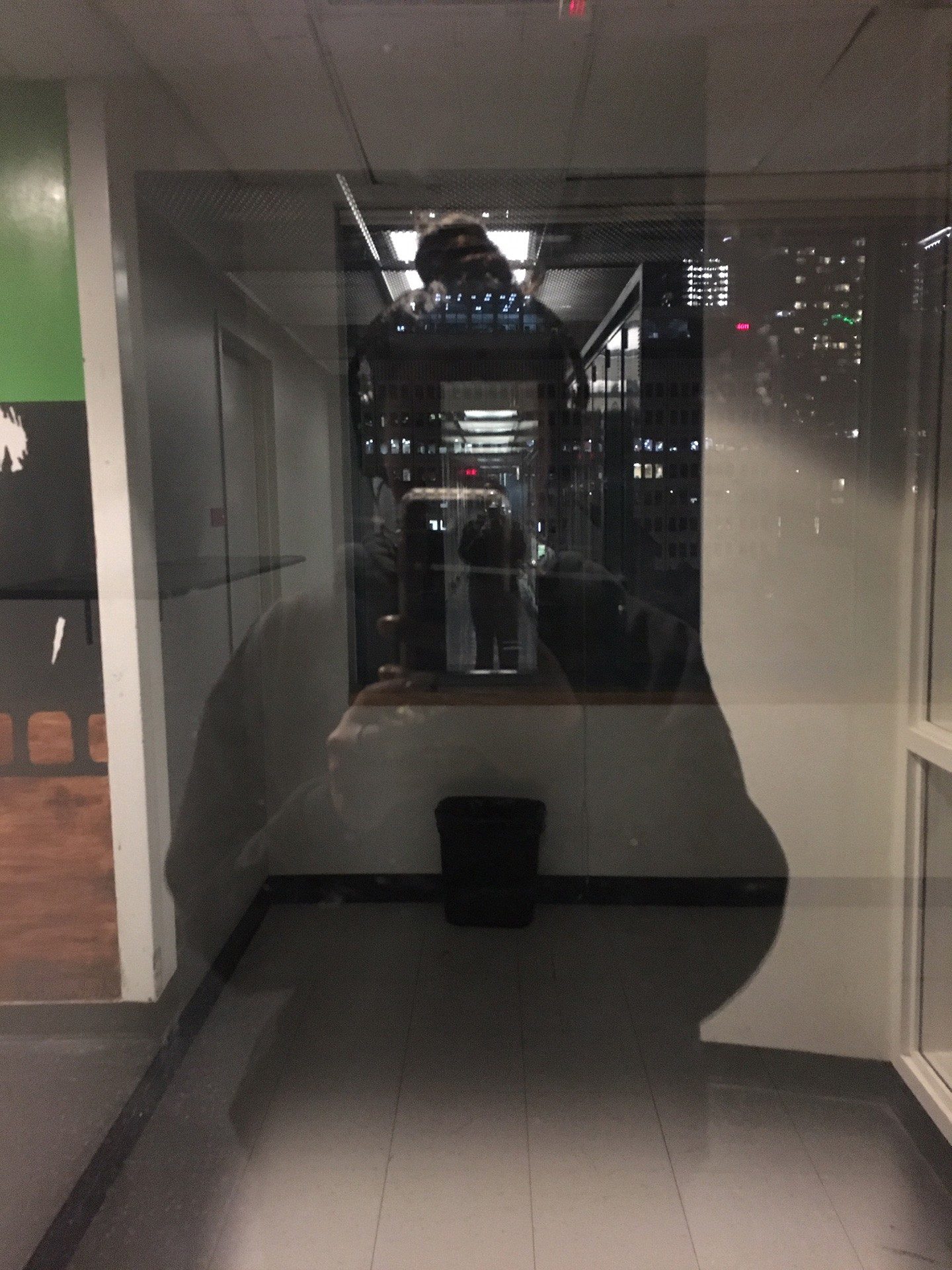
Picture locked at 2AM
I took this photo after I picture-locked my film. We were struggling in the editing suite at 3am and to find a purpose in this film. Finally, I got the structure that I wanted. I took a picture of my reflection, with the city and the school. [This selfie] helps me remember how I felt at that moment. I felt very accomplished. “Ok. I can close it. Picture-locked. Now I can focus on the sound. I am proud of myself.”
Last day of Film II
This was the last day of my Film 2 class. We were watching some rushes. I felt nostalgic and was thinking, “OMG, it’s going to be over.” There were many times I did not want to be there and I wanted it to be over. The last class made me appreciate the people and everything I experienced there. In general, it was an experience getting to know these people. Everyone has different processes and visions. I will miss everything, the bad and the good.
The motif (manifested)
[After the public screening of all second-year student films,] R. and I just walked around the city. We talked about the movie, the process, and other memories. We were feeling accomplished. We also thought about the future as well. Where will we go next? When I first explored this city, one of my friends showed me how to sneak out to the rooftop of a building downtown. I wanted to show [this place to] Rebeca. So, we sneaked out onto the rooftop again. It was a really cathartic experience. [Seeing Montreal’s landscape], I felt nostalgic. Even though I am not from here, I could connect with [this city] in some ways because I made something here. Montreal has shaped me as a person. I saw another airplane going by and I took a picture. Now, I always look at airplanes because of this film and think of their meanings. Airplanes are significant for me because I am always moving and am moved. A huge part of my identity comes from a diaspora life. I can never decide where I belong. I cannot place myself. I can’t say I am from somewhere … When I go back to Colombia, I always feel different. I grew up in North America, but I am not fully Canadian, not French, not from Calgary. I began to accept my identity as an individual then. At that moment, I saw the airplane and sun going down. This picture represents me and represents the whole experience of making this film.


